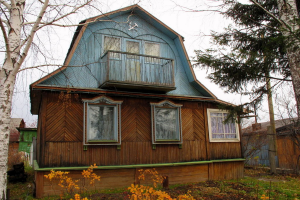 It could be said that the people who are the most prepared, are the ones who have just experienced a disaster. With the pain of a tragedy fresh on their minds, they’re much more willing to prepare for the worst. You could also apply this observation to nations. Who would doubt that as a nation, America was at it’s most prepared after the Great Depression and World War Two.
It could be said that the people who are the most prepared, are the ones who have just experienced a disaster. With the pain of a tragedy fresh on their minds, they’re much more willing to prepare for the worst. You could also apply this observation to nations. Who would doubt that as a nation, America was at it’s most prepared after the Great Depression and World War Two.
After that time period, most Americans had accumulated an abundance of skills that ranged from hunting, gardening, marksmanship, and numerous other skills we would now lump together under “tinkering” and “DIY.” For the most part, we knew how to fix things and make our belongings last as long as possible. All of these are attributes that are highly coveted by preppers today, and with the arrival of the Cold War, even the government took a vested interest in preparing Americans for nuclear war (now they largely chastise and persecute the self-reliant).
Of course, nowadays most Americans are far removed from the realities of starvation and war, and the generation that was intimate with those experiences, is dying out. We’re hardly the nation of self-sufficient farmers, craftsman, and tradesman that we used to be.
But if you want to see a modern, developed nation that still fosters self-sufficiency, then look no further than Russia, where the ability to grow your own food is still a widely prized skill.
While the majority of citizens in developed nations rely on transported produce and packaged goods to satiate their grumbling stomachs, the people of Russia feed themselves. They have little need for large-scale agriculture, as their agricultural economy is small scale, predominantly organic, and in the capable hands of their nation’s people.
In a thought-provoking article shared by Natural Homes, it was reported that in 2011, 51% of Russia’s food was grown either by dacha communities (40%), or by peasant farmers (11%). The remaining 49% of production was left to large agricultural enterprises.
When one digs deeper into the numbers reported by Russian Statistics Service, however, some very impressive details are discovered. In 2011, dacha gardens produced over 80% of the country’s fruit and berries, over 66% of the vegetables consumed, almost 80% of the potatoes purchased, and nearly 50% of the nation’s milk supply – much of it consumed raw.
These impressive statistics inspire one to ponder why more nations aren’t following suit. Perhaps it is in the Russian peoples’ bloodlines to derive extreme fulfillment from growing their own food (such is a theory happily accepted by the people). One thing is for sure – every nation should be following their lead.
In reality, the Russian impulse to grow their own food, even in urban areas, is fueled by recent memory. I actually mentioned this fact recently in an article about how the Greeks were growing their own food to cope with the collapse of their economy. Even at its most prosperous, those living under the Soviet system could hardly sustain themselves on the food that was rationed to them. They had to learn how to feed themselves, and these small dacha farms provided a significant amount of their food, even as the collapse of the communist system was causing widespread food shortages.
The dacha farms started out as rural estates for Russian nobility in the 17th century, and continued to grow in number until the rise of the Soviets. Even then, they mostly existed as leisure centers and summer retreats for the public (as well as more opulent gardens that were reserved for Soviet elites). But as World War Two arrived, they were largely retooled to grow food, a role which they continued to serve during the Cold War. Their growth exploded after the war, as squatters took over empty lots and built unsanctioned gardens.
Once the Soviet system collapsed, most of these communal gardens were privatized, and many of them serve as status symbols for upper and middle class Russians. But above all else, they are prized for their ability to grow food. Many a Russian is alive today because these farms continued to operate as the Soviet system was in its death throes. At the height of their productivity, they were growing 90% of Russia’s food supply, and nearly every Russian child was taught the basics of how these gardens operate.
While they only serve less than half of Russia’s food supply now, that’s still a far cry from most developed nations, where hardly anyone grows their own food, or buys it from outside of a grocery store. This would arguably make Russia one of the most resilient nations on the planet. These gardens saved millions before, and they could save many more in the future. Since they aren’t so reliant on a centralized logistical infrastructure like most American farms, they will be able to keep feeding the population through just about any disaster.
This article was originally published at Ready Nutrition™ on July 23rd, 2015







If government can just keep their hands off the people, the people learn to make do for themselves, and government cannot take care of themselves